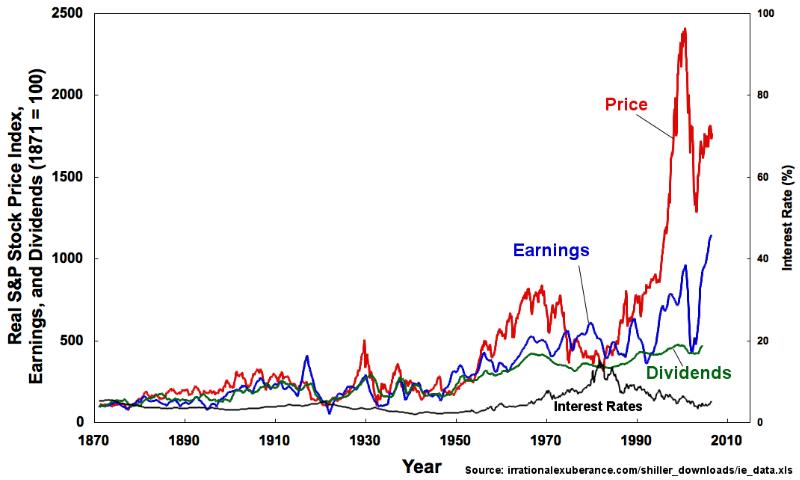Adam Reuter brings an excerpt from his book Financial Risk Management following the 2008 Crisis as a response to the debate that arose in talkbacks regarding the question of which is more dangerous, forex or stocks

Following a previous article, The prophecy was also given to fools in forex A heated debate arose on the question of which is more dangerous - investing in stocks or investing in foreign exchange. Adam Reuter, the author of the article, responds in a new article in which he enumerates the risk levels of the various investment avenues.
The world of financial investments can be divided into six main investment avenues: deposits and savings, shares, bonds, foreign exchange, goods (commodities), and alternative investments (structured assets, complex financial assets, hedge funds and more). These channels have sub-channels and derivatives.
In broad generalization it can be said that stocks are more dangerous than bonds and this is because stock indices are more volatile - meaning stocks rise more but in times of landslides they also fall more than bonds. Bonds are less risky, because it is essentially a loan that the issuer of the bond undertakes to pay back to us, the investors, according to the terms of the bond. Corporate bonds are more risky than government bonds because the former were issued by companies (conglomerates) and the latter a state guarantee. Commodities are the riskiest to invest in and currencies are somewhere in the middle between bonds and stocks. Regarding alternative investments, the answer is complex and depends on the type and nature of the investment.
But the proven way in finance theory to determine the risk level of each investment channel is to measure its volatility (measured in terms of standard deviations). In the table below, we roughly divide the channels and some of the sub-channels into risk levels:
- Deposits and savings - very low risk level, except for currency deposits where the risk is medium to high depending on the type of currency
- Government bonds - low risk level
- Corporate bonds - medium to high risk level
- Convertible bonds - medium to high risk level
- Options - high to very high risk level depending on leverage and the index to which they are linked
- Forwards (futures contracts) - the level of risk depends on the leverage and the index to which they are linked
- Swaps - the level of risk depends on the leverage and the index to which they are linked
- Shares - high level of risk
- ETFs - medium to high risk level depending on the index to which they are linked
- Commodities - high to very high risk level
- Coins - medium to high risk level
- Structured assets (structures) - low to medium risk level
- Hedge funds - medium to very high risk level
- Financial assets involve a very high level of risk
A more in-depth evaluation of the feasibility of investing in a security can be done by a historical examination (there is nothing to do, only the past performance can be analyzed) of its standard deviations against the return it generated for investors. A popular index for such an examination is called the "Sharpe index" and it examines the average annual return minus the risk-free average annual interest rate and divides the result by standard deviations. This index is very acceptable to professional investment managers. A better index in my opinion is the "Sortino index" which is similar to the Sharpe index but only tests the average annual negative return of the security divided by the standard deviations and this is because this index is only interested in examining the risk of financial loss of the investment.
(The excerpts are from the book Managing Financial Risks Following the 2008 Crisis, published by Yediot)
Adam Reuter - Chairman of Reuter Midan Investment House and CEO of the consulting company Hysonim Finance

5 תגובות
Joins Lold: I, at least, want more economic news.
And the next question that bothers me:
Following the publication about the "inflating" of Dash's bonds, I discovered that the concept is not entirely clear to me, not on a theoretical level, nor in this specific case: what is actually a transfer that was transferred?
A bit about market history: http://www.overcomingbias.com/2009/02/markets-are-antiinductive.html
The scientist needs more than one letter every two weeks in the economics section.
Now I understood to write the article only once but if you write twice then it is double
And for those who have not yet understood
Now I understood to write the article only once but if you write twice then it is double
And if you still don't understand, you are welcome to re-read the article and the comments
And if that didn't help either and you still don't understand, you are welcome to re-read the article and the comments
Why the duplication in the article?
So that we know that the writer actually fell in with everyone despite the theoretical "knowledge"??
And the author's emphasis: "the viability of the investment by historical examination"...
We all know that, wise in the night.
So why spill words???
All the "experts" lack the courage to say: they don't know. There is no clear economic sense in shares, and what is clear are only the investors' expectations and the games (!) for quick profits. After all, the rest of the investments are to one degree or another derivatives of the shares.
Maybe you can actually call it greed ????
Huge KZN...
Listening to analysts - endangering lives